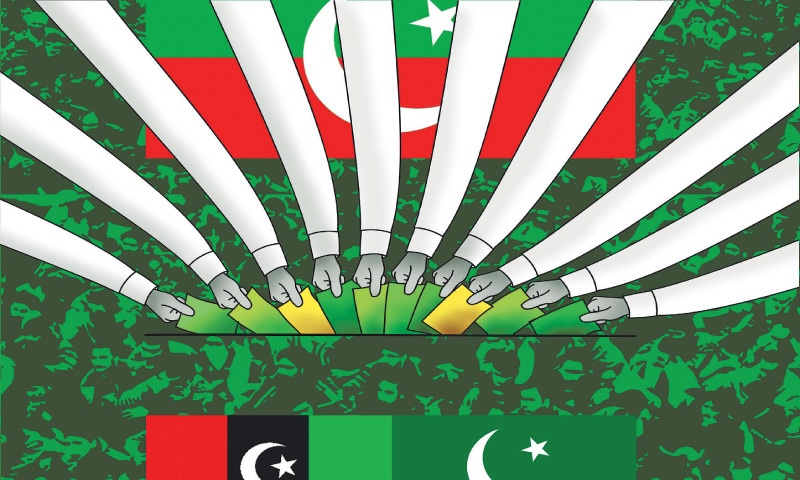
by admin | Aug 26, 2023 | Imran Khan, Pakistan
Imran Khan, full name Imran Ahmed Khan Niazi, is a prominent Pakistani politician, former international cricketer, and philanthropist. He was born on October 5, 1952, in Lahore, Pakistan. Imran Khan has played significant roles in both the world of sports and politics. Here’s an overview of his career and contributions:
1. Cricket Career:
Imran Khan is renowned for his achievements as a cricketer. He was a highly successful all-rounder, known for his fast bowling and batting prowess. Some highlights of his cricket career include:
- Captaincy of the Pakistan national cricket team: Imran Khan led Pakistan to their first-ever Cricket World Cup victory in 1992.
- All-rounder Achievements: He is one of the most successful all-rounders in cricket history, having scored over 3,800 runs and taken more than 380 wickets in Test matches.
- Retirement: Imran Khan retired from international cricket after the 1992 World Cup victory, marking the end of his cricketing career.
2. Political Career:
After retiring from cricket, Imran Khan transitioned into politics and established the Pakistan Tehreek-e-Insaf (PTI) political party in 1996. His political journey includes:
- Political Activism: Imran Khan began advocating for social justice, anti-corruption measures, and reform in Pakistan’s political system.
- PTI’s Growth: PTI gradually gained popularity as a political alternative, focusing on issues such as good governance, economic reform, and social justice.
- 2018 General Elections: In the general elections held in 2018, PTI emerged as the largest party in the National Assembly, and Imran Khan was elected as the 22nd Prime Minister of Pakistan.
- Prime Ministerial Tenure: As Prime Minister, Imran Khan has aimed to address various challenges, including economic stability, governance reform, and social welfare.
3. Philanthropy and Social Work:
Throughout his life, Imran Khan has been involved in various philanthropic activities. He established the Shaukat Khanum Memorial Cancer Hospital & Research Centre (SKMCH&RC) in Lahore, Pakistan, which provides cancer treatment to patients regardless of their ability to pay. He also founded Namal University in Mianwali, which focuses on providing quality education to underserved regions.
Imran Khan’s legacy is marked by his achievements in cricket, his dedication to social causes, and his role as a political leader. His journey from a cricket legend to a prominent political figure has left a lasting impact on Pakistan’s history and society.

by admin | Aug 26, 2023 | Mobile Companies are in Pakistan and India, Pakistan, Uncategorized
How many Mobile Companies are in Pakistan and India and their users?
Pakistan and India have a competitive mobile market with several companies offering mobile services.
In Pakistan, there are major mobile service providers like:
- Jazz (Mobilink): One of the leading mobile operators in Pakistan.
- Telenor: Another prominent operator with a significant user base.
- Zong: Operated by China Mobile Pakistan, it has gained popularity in recent years.
- Ufone: A subsidiary of Pakistan Telecommunication Company Limited (PTCL).
- SCO (Special Communications Organization): Operates in specific regions, mainly serving Azad Jammu and Kashmir and Gilgit-Baltistan.
In India, the mobile market is extensive, and major players include:
- Jio (Reliance Jio): Known for its disruptive pricing strategies and rapid growth.
- Airtel (Bharti Airtel): One of the largest mobile operators in India.
- Vodafone Idea: Formed by the merger of Vodafone India and Idea Cellular.
Number of Mobile Users:
As of my last update, India had one of the largest mobile user bases in the world, with hundreds of millions of subscribers. Pakistan also had a significant number of mobile users, although the number was smaller compared to India.
Mobile Spending:
The daily mobile spending habits of users can vary widely based on factors such as income levels, usage patterns, and geographic locations. In both Pakistan and India, people spend money on various mobile-related services, including voice calls, text messages, data plans, mobile apps, and more. Daily spending on mobile phones can range from small recharges for basic services to larger expenditures for data plans and digital content.
It’s important to note that specific statistics about daily mobile spending might not be readily available and can vary greatly among individuals.
What is the use and uses of mobile phones?
Mobile phones, also known as cell phones or smartphones, have become an integral part of modern life and society. Their versatility and convenience have led to a wide range of uses that extend far beyond simple voice communication. Here are some of the primary uses and purposes of mobile phones:
- Communication: The primary function of mobile phones is communication. They allow users to make voice calls, send text messages (SMS), and use various messaging apps for instant messaging, video calls, and voice notes. Communication can take place locally and globally.
- Internet Access: Mobile phones provide access to the internet, enabling users to browse websites, search for information, read news, and connect with social media platforms. This feature has transformed the way people access and consume information.
- Social Networking: Mobile phones facilitate social interactions through various social media platforms like Facebook, Twitter, Instagram, and more. Users can share updates, photos, and videos, and engage with friends, family, and followers.
- Entertainment: Mobile phones offer a plethora of entertainment options. Users can watch videos, stream movies, and TV shows, listen to music, play games, and even read eBooks.
- Navigation and Maps: GPS-enabled smartphones provide navigation services, helping users find directions, locate places of interest, and plan routes for travel.
- Productivity: Mobile phones serve as productivity tools, with apps for email, calendars, note-taking, task management, and document editing. They enable users to stay organized and efficient on the go.
- E-Commerce: Mobile phones have transformed the way people shop. Users can browse online stores, compare prices, read reviews, and make purchases directly from their devices.
- Banking and Finance: Mobile banking apps allow users to check their account balances, transfer funds, pay bills, and even invest in financial products. Mobile wallets enable cashless transactions.
- Health and Fitness: Health-related apps can track physical activity, monitor heart rate, provide nutrition information, and even offer guided workouts. Users can also access medical information and telemedicine services.
- Photography and Video: Mobile phones have become primary devices for photography and videography. Advanced camera technologies allow users to capture high-quality photos and videos and instantly share them online.
- Education: Mobile phones provide access to educational resources, online courses, language learning apps, and educational games, making learning more accessible and flexible.
- Emergency Services: Mobile phones play a crucial role in emergencies. They allow users to call for help, contact emergency services, and share location information.
- Smart Home Integration: With the rise of smart home devices, mobile phones can control and monitor various aspects of the home, including lighting, security cameras, thermostats, and more.
- Business and Work: Mobile phones are essential for professionals on the go. They enable remote work, communication with colleagues and clients, access to business apps, and email management.
- Environmental Monitoring: Mobile phones can be used to collect and share data for various environmental monitoring purposes, such as weather forecasting, pollution tracking, and wildlife observation.
The uses of mobile phones continue to expand as technology evolves and new apps and functionalities are developed. They have become an indispensable tool that enhances various aspects of daily life and contributes to the interconnectedness of the modern world.

by admin | Aug 26, 2023 | Analyzing the Current Political Landscape in Pakistan, Pakistan
Analyzing the Current Political Landscape in Pakistan: Election Dynamics and the Role of the Caretaker Government
- Introduction
- The Evolving Political Scene in Pakistan
- Significance of Elections and Caretaker Governments
- Current Political Situation
- Major Political Parties and Their Positions
- Emerging Issues and Public Sentiments
- Upcoming Elections
- Scheduled Elections and Their Importance
- Preparations and Political Alliances
- Caretaker Government: Its Role and Formation
- Purpose of a Caretaker Government
- Process of Selecting Caretaker Officials
- Challenges and Controversies
- Ensuring Transparency and Fairness
- Addressing Allegations of Bias and Manipulation
- International Observers and External Influence
- Role of International Organizations in Elections
- Balancing Sovereignty and External Observations
- Public Expectations and Participation
- Civic Engagement and Voter Turnout
- Expectations from Elected Representatives
- Media’s Role and Election Coverage
- Media’s Influence on Public Perception
- Responsible Journalism during Election Period
- Caretaker Government’s Responsibilities
- Ensuring Neutral Administration
- Facilitating a Smooth Transition
- Future Implications and Prospects
- Impact of Election Outcomes on Policy Direction
- Upholding Democratic Values and Governance
- Conclusion
- Navigating Political Waters: Elections and the Caretaker Government
1. Introduction:
Pakistan’s political landscape is characterized by its complexity and continuous evolution. This report delves into the current political dynamics, the impending elections, and the role and significance of the caretaker government in the democratic process.
2. Current Political Situation:
An overview of the leading political parties, their stances on key issues, and the prevailing sentiments among the public sets the stage for understanding the broader political context.
3. Upcoming Elections:
Scheduled elections represent a crucial turning point for the nation. The report examines the preparations, political alliances, and the significance of these elections.
4. Caretaker Government: Its Role and Formation:
The purpose and role of the caretaker government in ensuring a level playing field for elections are discussed, along with insights into how caretaker officials are selected.
5. Challenges and Controversies:
Challenges related to transparency, fairness, and allegations of bias or manipulation are central to a meaningful electoral process and are explored within this context.
6. International Observers and External Influence:
The role of international organizations in observing elections and the delicate balance between maintaining national sovereignty and welcoming external observers are examined.
7. Public Expectations and Participation:
Voter engagement, turnout rates, and public expectations from elected representatives play a pivotal role in shaping election outcomes.
8. Media’s Role and Election Coverage:
The influence of media on public perception and responsible journalism practices during the election period are crucial for accurate information dissemination.
9. Caretaker Government’s Responsibilities:
Ensuring a neutral administration, facilitating a smooth transition of power, and maintaining an environment conducive to fair elections are key responsibilities of the caretaker government.
10. Future Implications and Prospects:
The report delves into the potential ramifications of election outcomes on policy direction and governance, emphasizing the importance of upholding democratic values.
11. Conclusion:
The interplay between elections and the caretaker government serves as a foundation for Pakistan’s democratic process. By navigating the complexities of the political landscape, the nation can continue on its path toward effective governance and political stability.

by admin | Aug 26, 2023 | Navigating the Use of Android and Apple Devices in Russia, Technology
Navigating the Use of Android and Apple Devices in Russia: A Comprehensive Guide
- Introduction
- Technology Landscape in Russia
- Popularity of Android and Apple Devices
- Choosing the Right Device
- Android Devices: Diversity and Customization
- Apple Devices: Ecosystem and User Experience
- Device Availability and Purchase
- Retail Stores and Authorized Resellers
- Online Marketplaces for Device Purchase
- Setting Up Your Device
- Language and Region Settings
- Adding Russian Keyboard and Input Methods
- Network and Connectivity
- Mobile Operators and SIM Cards
- Wi-Fi Availability and Usage
- Downloading Apps
- Google Play Store for Android
- Apple App Store for iOS
- Navigating Language and Localization
- Language Preference in Apps
- Language Settings for Voice Assistants
- Cultural and Legal Considerations
- Data Privacy Regulations
- Respecting Local Customs and Norms
- Tech Support and Repair Services
- Authorized Service Centers
- Online Support Forums and Resources
- Conclusion
- Embracing the Digital Experience in Russia
- Seamlessly Integrating Android or Apple Devices
1. Introduction:
Russia’s tech-savvy population has led to the widespread adoption of both Android and Apple devices. This guide offers insights on how to effectively use these devices in Russia’s unique technological and cultural context.
2. Choosing the Right Device:
When choosing between Android and Apple devices, consider factors such as Android’s device diversity and customization options versus Apple’s ecosystem and seamless user experience.
3. Device Availability and Purchase:
You can purchase Android and Apple devices from various retail stores, including authorized resellers and flagship stores. Alternatively, explore online marketplaces that offer a wide range of options.
4. Setting Up Your Device:
During the initial setup, choose Russian as the device language and set the region to Russia. Additionally, add the Russian keyboard for easy text input.
5. Network and Connectivity:
Select from a range of mobile operators for SIM card options, catering to various data and call needs. Utilize Wi-Fi connections, which are widely available in public spaces.
6. Downloading Apps:
Access the Google Play Store for Android devices and the Apple App Store for iOS devices to download applications tailored to your interests and needs.
7. Navigating Language and Localization:
Customize language preferences in apps to enhance user experience. Adjust language settings for voice assistants like Siri or Google Assistant.
8. Cultural and Legal Considerations:
Be aware of data privacy regulations in Russia and how they impact your device usage. Respect local customs and norms when using your device in public spaces.
9. Tech Support and Repair Services:
In case of technical issues, authorized service centers offer reliable assistance. Online support forums and resources can also provide solutions to common problems.
10. Conclusion:
Embrace the digital experience in Russia by seamlessly integrating Android or Apple devices into your daily life. With the right setup and knowledge, you can navigate the technological landscape with ease and efficiency.

by admin | Aug 25, 2023 | AI, Technology
AI and the Future of Technology: Unveiling Possibilities and Challenges
Introduction
In the rapidly evolving landscape of technology, Artificial Intelligence (AI) stands out as a transformative force that promises to revolutionize industries, reshape economies, and redefine the way we live and work. With its unprecedented ability to mimic human intelligence and perform complex tasks, AI has emerged as a catalyst for innovation, raising questions about the future of technology and its impact on various aspects of our lives. In this blog post, we will delve into the intricate relationship between AI and the future of technology, exploring its potential, challenges, and the path forward.
AI’s Role in Shaping the Future
AI has already made significant strides in various domains, from healthcare and finance to transportation and entertainment. As machines become more adept at processing and analyzing massive amounts of data, they enable us to make more informed decisions, automate tasks, and uncover insights that were previously hidden. Let’s explore some key areas where AI is poised to shape the future:
- Automation and Efficiency: AI-driven automation is reshaping industries by streamlining processes and increasing efficiency. From manufacturing to customer service, businesses can leverage AI-powered systems to reduce errors, enhance productivity, and optimize resource allocation.
- Healthcare Revolution: AI’s potential in healthcare is monumental, with applications ranging from disease diagnosis to drug discovery. AI algorithms can analyze medical images, predict patient outcomes, and even assist in surgery, ushering in an era of personalized medicine.
- Smart Cities and IoT: The integration of AI with the Internet of Things (IoT) is transforming urban living. Smart cities use AI to manage traffic, conserve energy, and enhance public services, ultimately improving the quality of life for residents.
- Economic Growth: As AI-powered technologies proliferate, they create new economic opportunities. AI-driven startups and innovations have the potential to drive economic growth by generating jobs and fostering entrepreneurship.
Challenges and Considerations
While the prospects of AI are exciting, they are not without challenges. Addressing these challenges is crucial to ensure that the future of technology is beneficial and ethical:
- Ethical Concerns: AI raises ethical questions around privacy, bias, and accountability. Ensuring that AI systems are transparent, and unbiased, and respect individual rights is essential.
- Job Displacement: The automation potential of AI has led to concerns about job displacement. As machines take over routine tasks, the workforce needs to adapt and acquire new skills to remain relevant.
- Security Risks: With increased reliance on AI comes the risk of cyberattacks and breaches. AI can be both a tool for enhancing security and a vulnerability that malicious actors may exploit.
- Regulatory Frameworks: Governments and regulatory bodies are grappling with the task of creating frameworks that balance innovation and safety. Striking the right balance is crucial to fostering AI development while mitigating risks.
The Path Forward: Collaboration and Education
To fully harness the potential of AI and ensure a positive future for technology, collaboration among various stakeholders is imperative:
- Interdisciplinary Collaboration: AI’s complexity requires collaboration between computer scientists, ethicists, policymakers, and domain experts. This interdisciplinary approach can lead to well-rounded solutions.
- Investing in Education: Preparing the workforce for an AI-driven future demands educational initiatives that promote digital literacy and reskilling. Lifelong learning will be essential to adapt to the changing technological landscape.
- Ethical AI Development: AI developers must prioritize ethical considerations at every stage of development. From data collection to algorithm design, ethical guidelines should be integrated into the process.
- Public Awareness: Raising public awareness about AI’s capabilities and limitations can foster informed discussions and help manage expectations about its impact on society.
Conclusion
The synergy between AI and the future of technology holds immense promise. As AI continues to evolve, it will likely become an indispensable tool across various industries, transforming how we live and work. However, addressing challenges related to ethics, jobs, security, and regulation is vital to ensure that AI’s potential is realized responsibly. By fostering collaboration, investing in education, and promoting ethical development, we can shape a future where AI-driven technologies enhance our lives while upholding our values. Embracing this future requires a balance between innovation and responsibility—an endeavor that will define the trajectory of our technological evolution.





